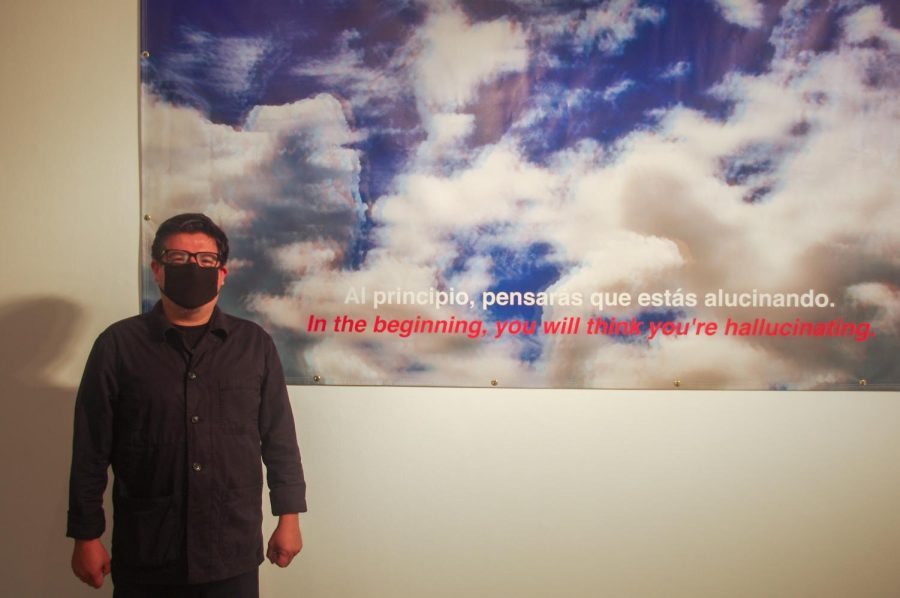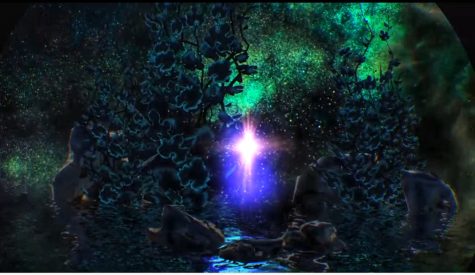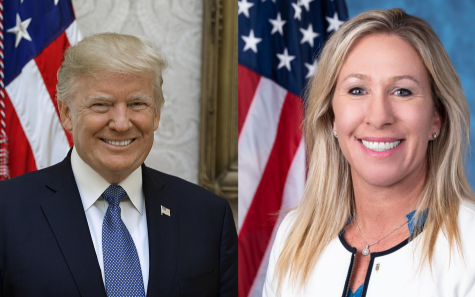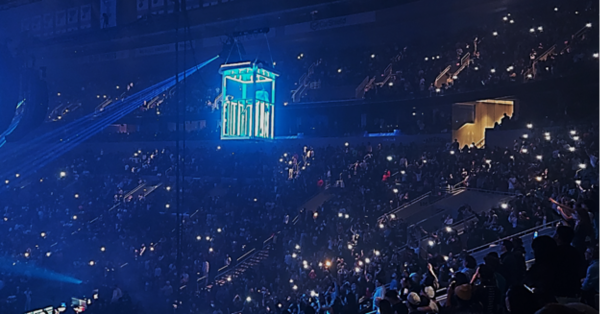Exhibit tackling themes of identity and politics opens in Visual Arts Gallery
José Guadalupe Garza standing next to his 2019 piece “Sin Fronteras/Stateless (still from nonexistent film).”
José Guadalupe Garza wants to take you to a new reality, one where fact and fiction overlap and what you see makes you question what you know. Garza is the artist behind the latest exhibition at the Visual Arts Gallery on campus.
The show, Autobiography of a Brown Buffalo II, opened Sep. 23 with a reception for the show on Sep. 30. The show is the first of three planned for this semester in the space, located on the first floor of the Health and Sciences Building (HSB). The exhibition will be on display until Oct. 14.
The show consists of installations based on appropriated and manipulated images from popular culture. The installation is a spiritual sequel to the 1972 fictionalized autobiography by Oscar Zeta Acosta of the same name. The book centers on the experiences of a Chicano in the 1960s and questions of identity in America.
“When you’re part of certain communities, it’s impossible to be apolitical,” said Garza, whose show remixes Acosta’s themes of politics, race, mass media and capitalism. Garza continues, “It’s not up to us.”
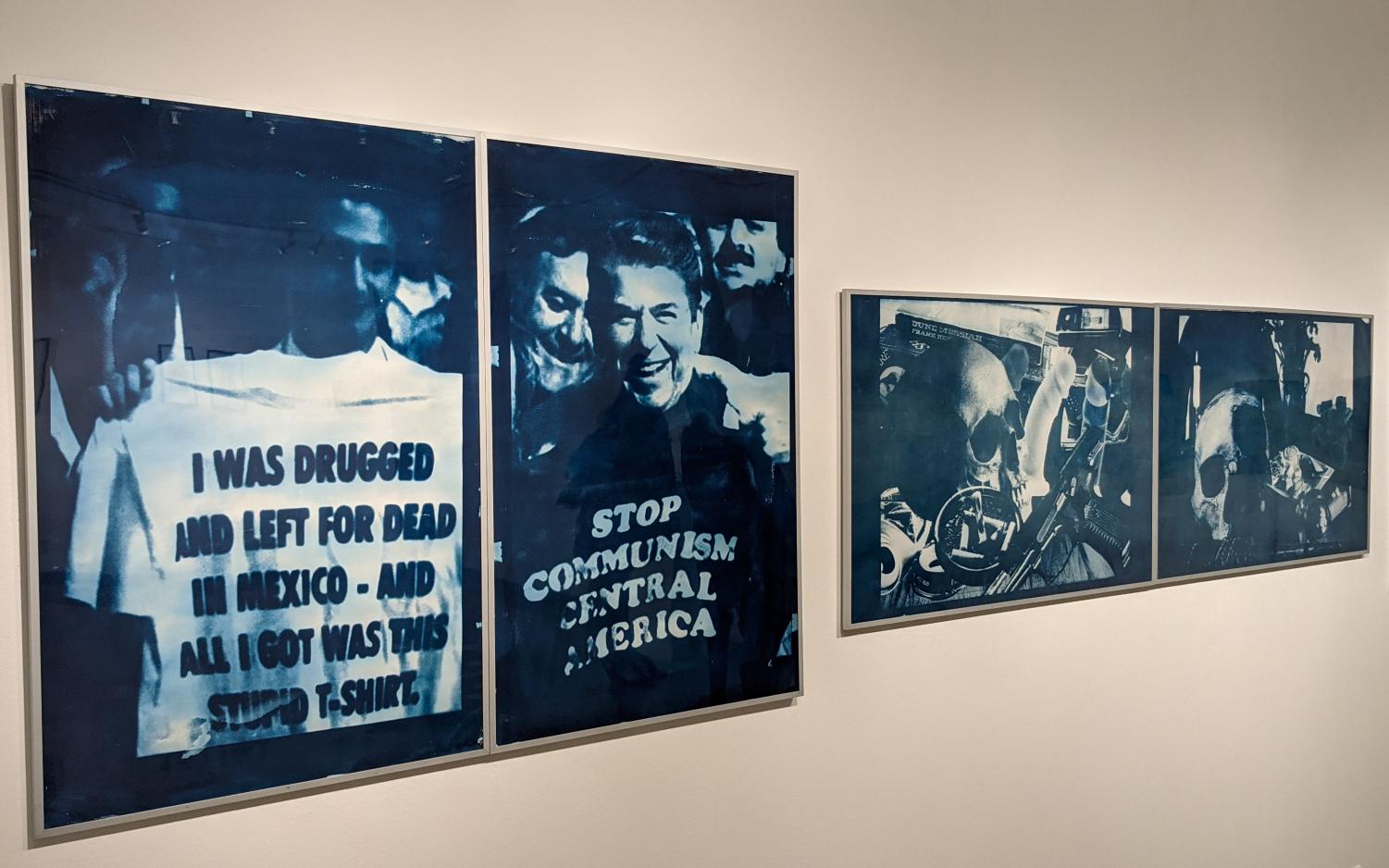
This blend of reality and fiction comes through in Garza’s work, which features imagery reminiscent of Donald Trump’s iconic “Make America Great Again” hats. The show also draws inspiration from the Mexican Revolution, with works like a depiction of film star Marlon Brando as a revolutionary Emiliano Zapata.
“For me, my art wasn’t initially political,” said Garza. It became political as his life and career evolved.
“If it happened much earlier, I might not have been as comfortable,” he added.
Even still, he does not say he intentionally tackles politics or that he is an activist. Instead, his work reflects the realities of his life.
“I think activism implies attempting to enact a policy change,” Garza said. “This work is more about sharing experiences.”
Garza currently coordinates and administers academic programs at the Mildred Lane Kemper Art Museum, a teaching museum at Washington University in St. Louis. Garza, who holds a master’s degree from the school, says his years in academia are a vital part of his work.
“I don’t separate my studio practice from my roles as an educator or as a husband,” he said. “It’s all connected.”
Melissa Bauer, Garza’s wife and collaborator, is also featured in the show. She collaborated on the piece “Ricardo Flores Magon in St. Louis,” a bronze plaque describing the life of Ricardo Flores Magón, a Mexican anarchist publisher and activist. His writings and work as a publisher is credited with inspiring the Mexican Revolution, though they also drew the attention of the United States government, which arrested and imprisoned him for them.
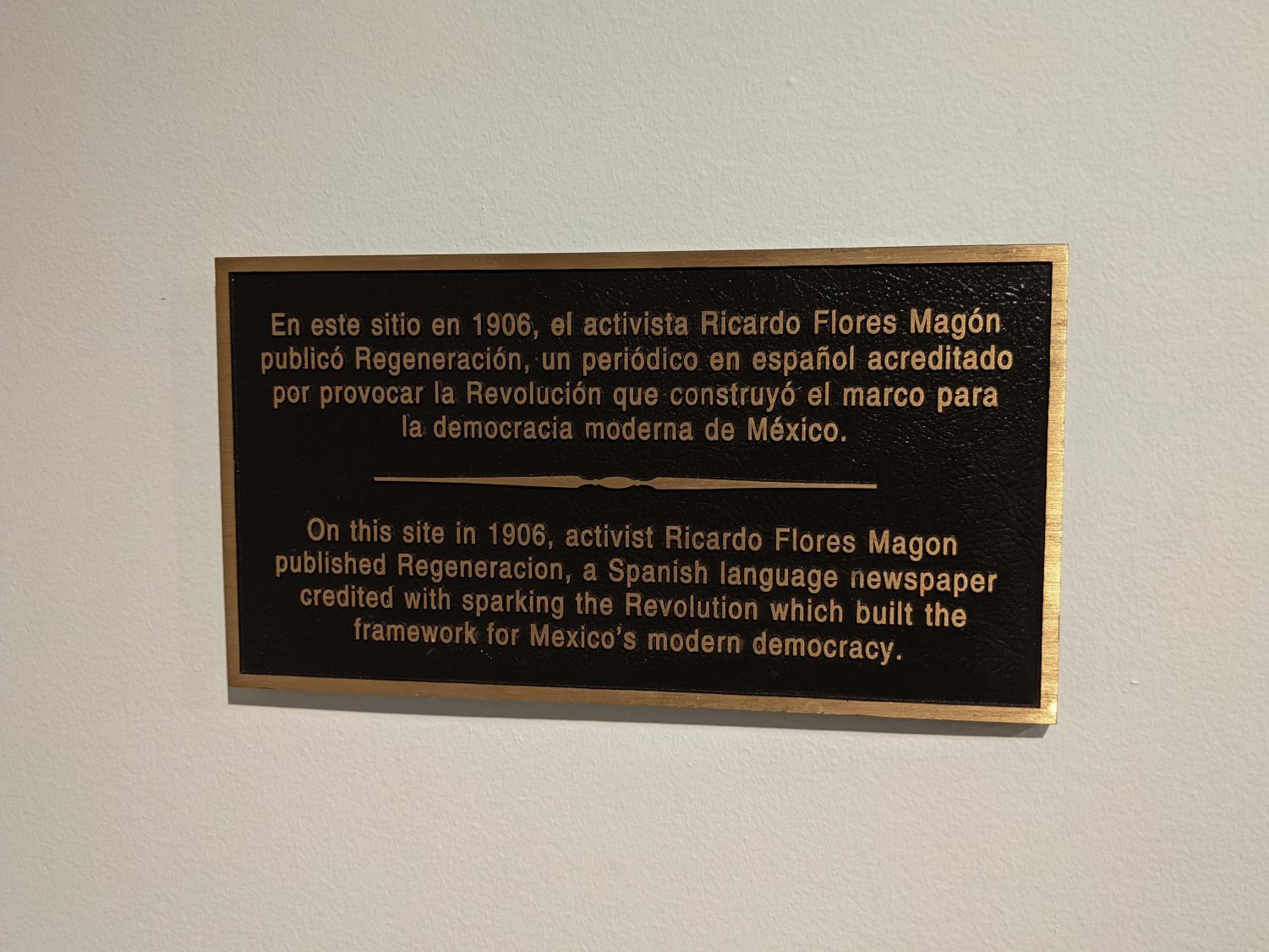
Magón’s work is also featured in Temporal Pincer, a readymade work of books by and about Latinx life.
This show has previously been exhibited at the High Low Gallery in St. Louis, where it was reviewed in the magazine Art in America.
“Art is about introducing someone to a new reality,” said Garza.
The realities of Garza’s work fit within the Visual Arts gallery’s broader theme of the Visual Arts Gallery.
“The gallery is a space where we can present experiences of all kinds,” said the gallery’s director, Allison Lacher.
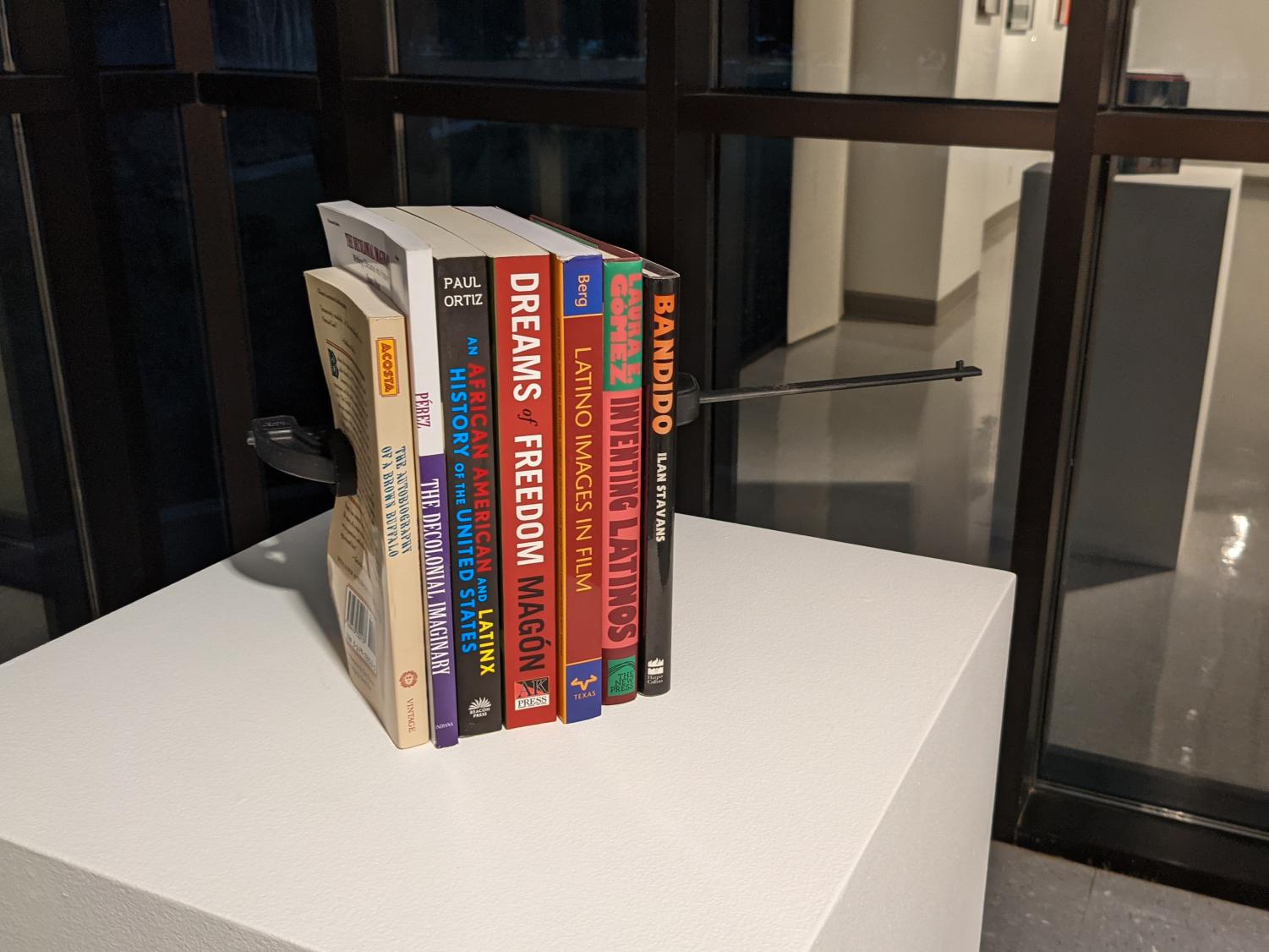
Prior to this show, Lacher has collaborated with Garza on other projects. Both were founding members of Monaco, an artist-owned cooperative in St. Louis, which bills itself as an alternative to the traditional gallery model. (Neither are current members of the group.)
Lacher has brought controversial work to the gallery, such as the 2013 show “Guns and Butter” from the Chicago-based art collective Industry of the Ordinary. The show featured a rifle encased in hundreds of pounds of butter, set up to slowly melt over the course of the exhibition.
This semester, Lacher is bringing two more shows to the gallery. After Garza’s wraps up, the gallery will exhibit a new show from Springfield-based paper artist Betsy Dollar, who is past installations have included a life-sized wedding party made of paper and hanging works of 18 square foot panels inspired by ancient Sumerian myth.
Dollar’s show will run from Oct. 21 to Nov. 18.
After that, the gallery will host a silent auction and benefit from Nov. 29 to Dec. 2.
The Visual Arts Gallery is open from 11 a.m. to 6 p.m., Monday through Thursday.



